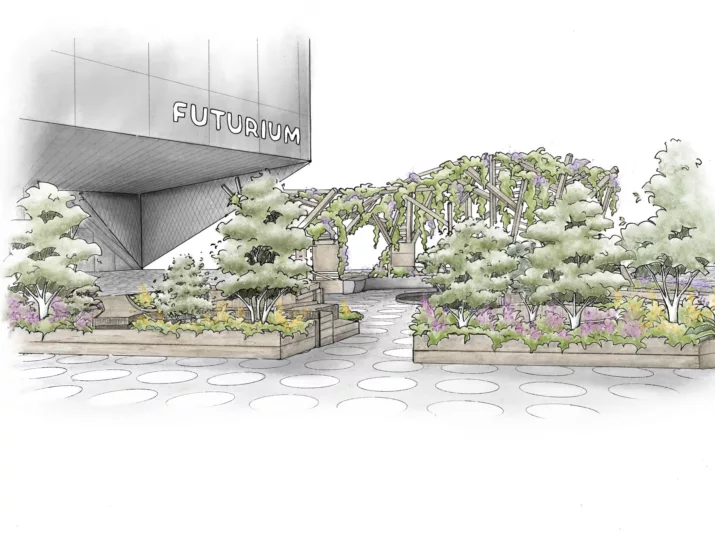
Forest garden
Layer by layer
Forest gardens are a complex form of agroforestry system, i.e. a combination of arable land with trees. They reproduce the conditions of a forest edge, where meadow or arable land meets forest vegetation. Here, at the edge of both systems, there is a high level of diversity on many levels.
Forest gardens are multi-layered, near-natural gardens and consist mainly of perennial plants. These are mainly woody plants with edible components such as fruit, nuts and berries, but also perennial species in the vegetable, herb and root layer.
Graphic: Sarah Graffunder
This tiered structure means that many more plants can grow and be harvested on the same area than on a traditional field, where only one crop is grown at a time. This multi-layered structure is a traditional form of cultivation that has long been known and proven in many regions
Trees are our superheroes!
Trees provide shade and protection from wind and dehydration. They form diverse spaces, which in turn provide a habitat for a variety of plants and animals, especially insects. The ground cover layer in which the strawberries grow, for example, protects the soil from drying out and erosion. The many leaves that the trees drop in the fall become the famous humus layer - the fertile part of the soil in which our food grows.
Similar to forests, forest gardens can help regulate the climate through their long-term high volume of greenery and their increasingly humus-rich soils. In contrast to conventional cultivation with annual crops, where carbon is released through soil cultivation, carbon is stored in the soil when perennial plants are cultivated.
Mechanical tillage and the use of fertilizers in conventional agriculture impair soil life, which is essential for maintaining fertile soil. Forest garden systems, on the other hand, manage without mechanical soil cultivation and without the use of chemical pesticides and fertilizers
Forest gardens in the city
In addition to their ecological functions and the cultivation of food, forest gardens in the city can be places for people to meet and learn together. They are co-designed and maintained by the people in the city.